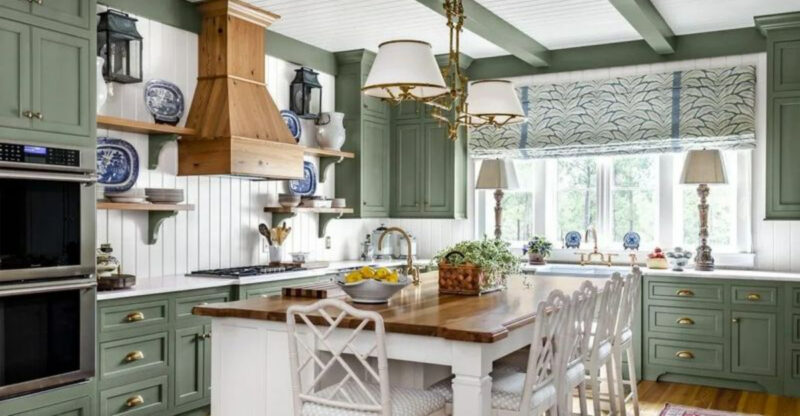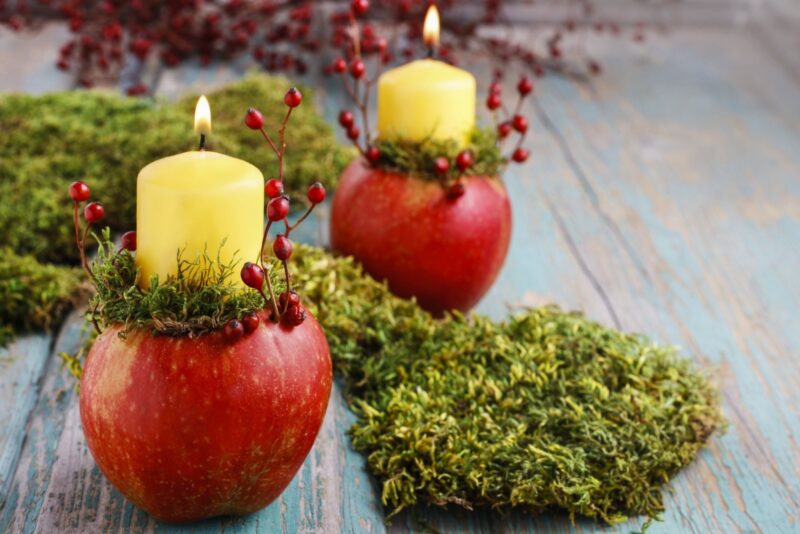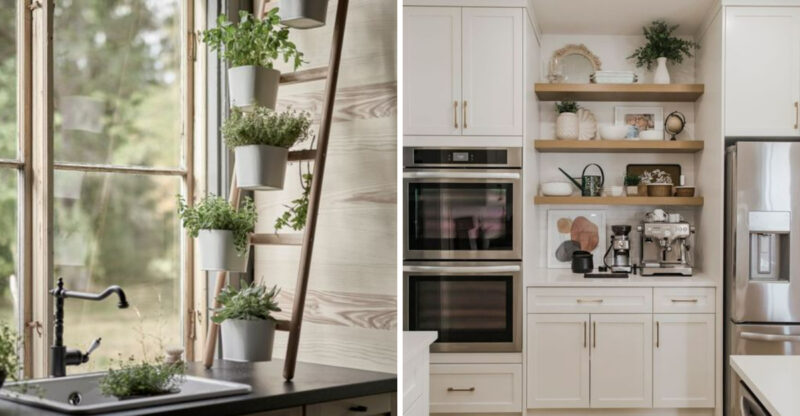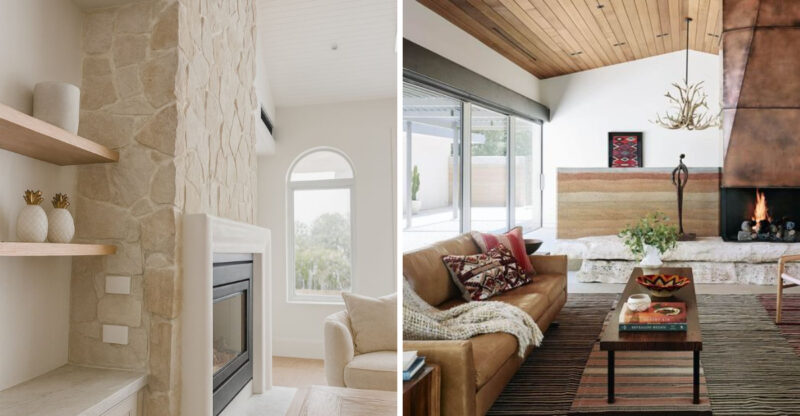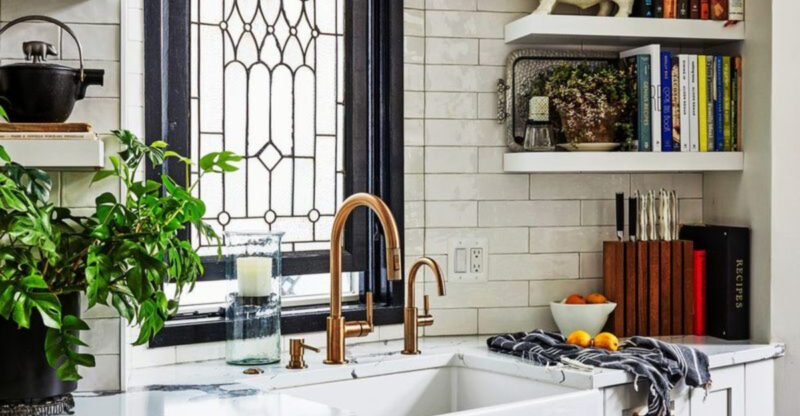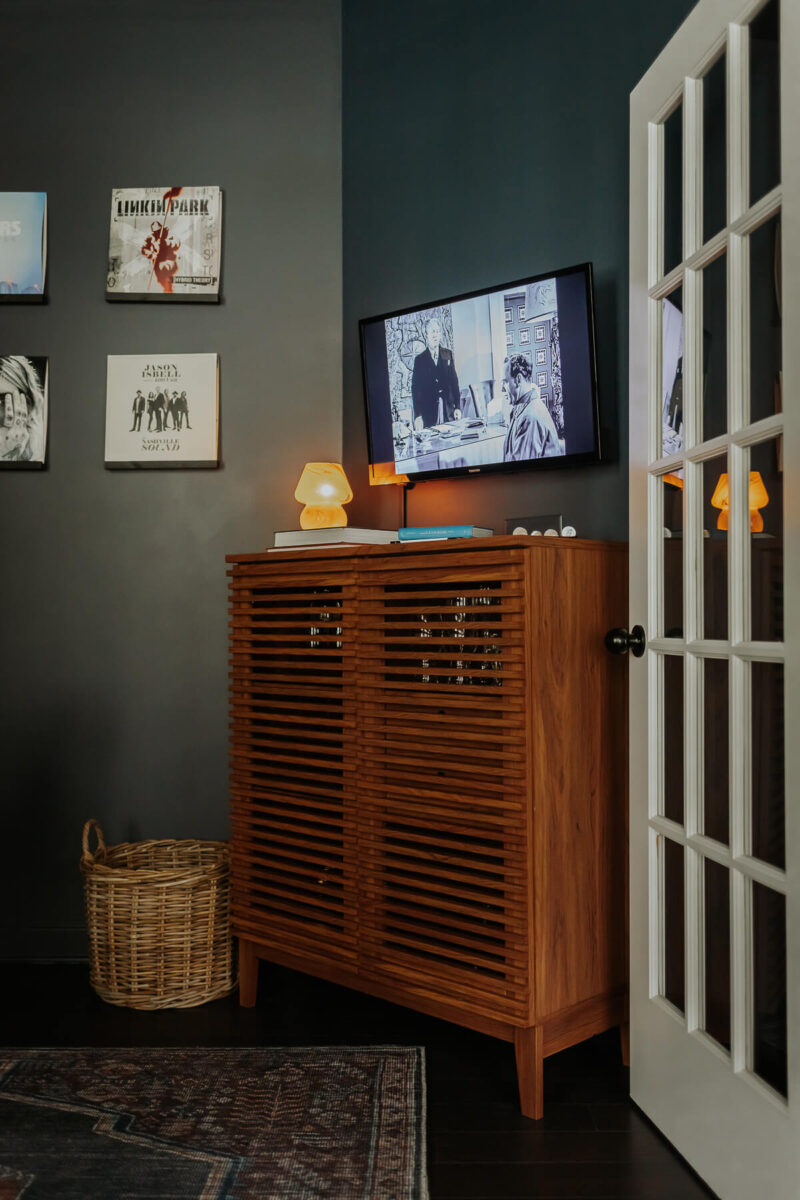14 Kitchen Fads Disappearing From Illinois Homes (Plus 10 That Still Work Beautifully)
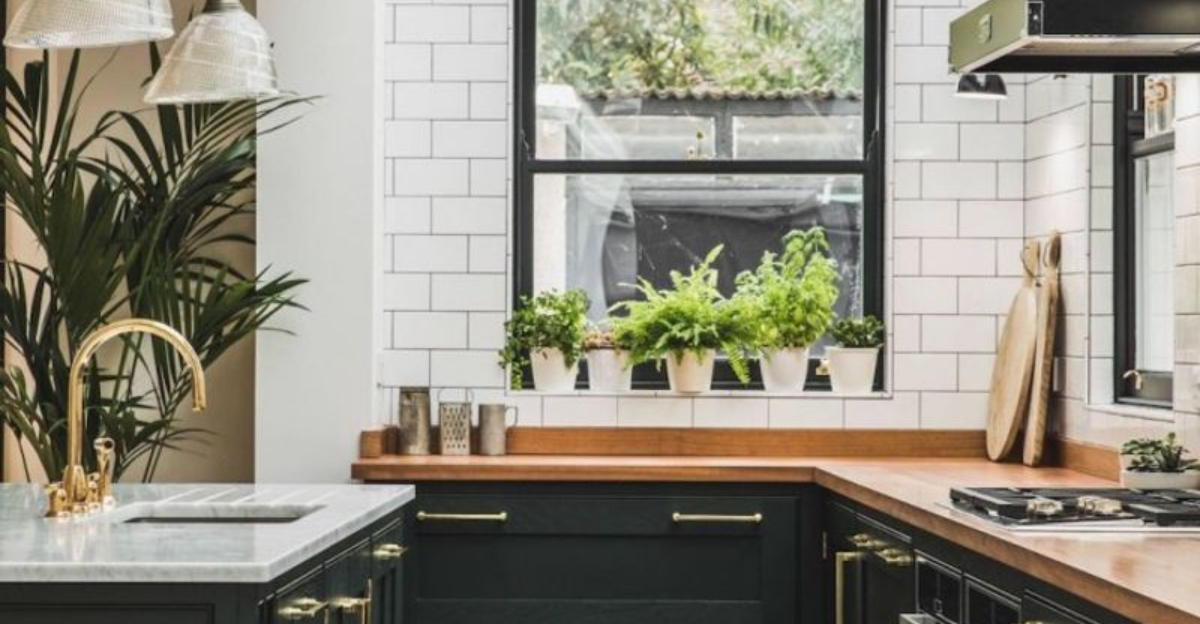
Illinois kitchens have been the heart of the home for generations but not every design choice stands the test of time.
Trends that once defined style across the Prairie State are now quietly disappearing, making room for fresher, more functional ideas.
As tastes evolve, homeowners are saying goodbye to dated features and leaning into looks that blend classic charm with modern convenience. Ready to see which trends are on their way out and which ones still deserve a place in your kitchen? Let’s dive in.
1. Over-the-top granite countertops
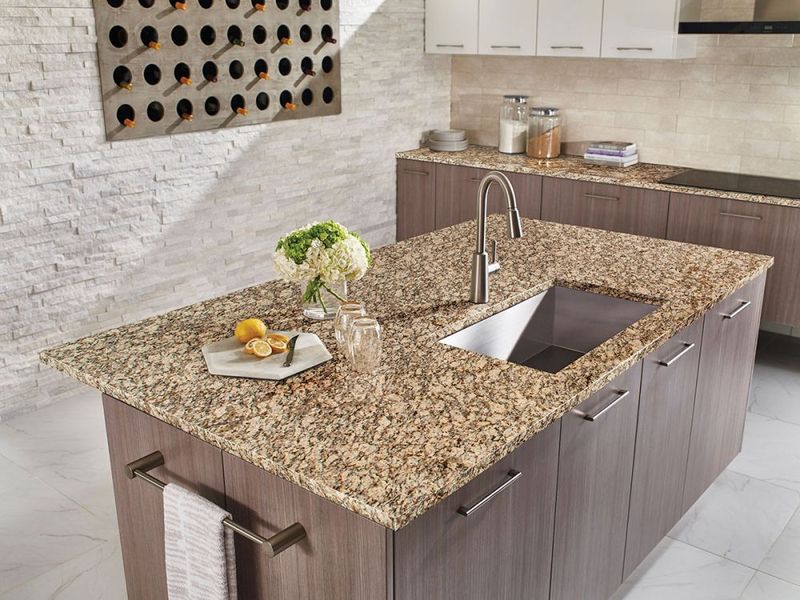
Remember when every home renovation show featured those busy, multi-colored granite countertops? Those wildly patterned surfaces with gold, brown, and burgundy swirls are rapidly disappearing from Illinois kitchens.
Homeowners now prefer cleaner, more subtle surfaces that don’t overwhelm the eye. The maintenance requirements have also pushed people away those porous stones need regular sealing to prevent staining and bacteria growth.
Many Illinois families have realized these dramatic countertops date a kitchen quickly and make it harder to change other design elements without clashing. Simpler, more versatile options have taken center stage in modern Prairie State homes.
2. Oak cabinetry
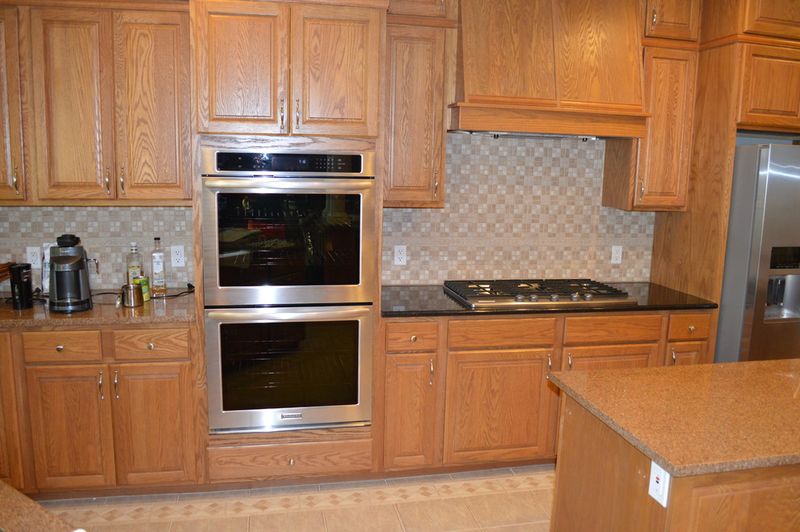
Golden oak cabinets dominated Illinois kitchens throughout the 1980s and 1990s. That distinctive honey-colored wood with prominent grain patterns once represented the pinnacle of kitchen luxury but now screams “outdated” to most homebuyers.
The heavy, orangey appearance creates a visual weight that makes kitchens feel smaller and darker than they actually are. Many Illinois homeowners have painted over these cabinets or replaced them entirely with lighter options.
While solid wood construction remains valuable, the finish and color have fallen dramatically out of favor. Some homes in rural Illinois communities still showcase these cabinets, but urban and suburban renovations almost universally avoid this once-ubiquitous material.
3. Fluorescent ceiling lights
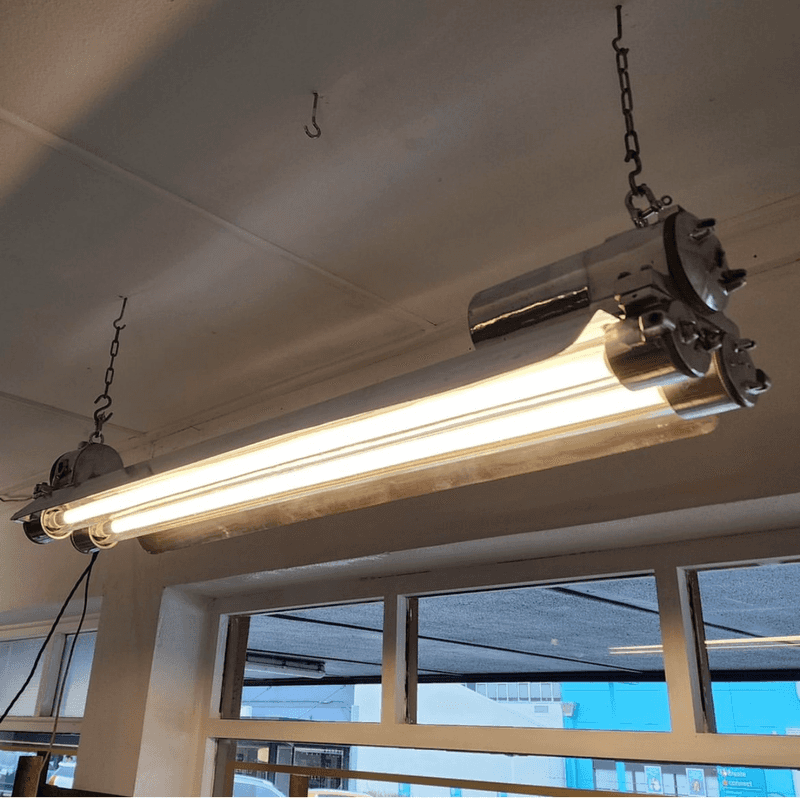
Those long, rectangular fluorescent light fixtures that buzzed overhead are vanishing from Illinois kitchens faster than deep dish pizza at a Bears tailgate. The harsh, institutional lighting they provided made food look unappetizing and created an uncomfortable atmosphere.
Beyond the unflattering light quality, these fixtures were energy hogs compared to modern alternatives. The flickering, delayed start-up, and tendency to cast a sickly blue-green glow made them particularly unwelcoming in food preparation spaces.
Many Illinois homeowners have torn out these outdated fixtures, replacing them with recessed lighting, track systems, or decorative pendants that offer better illumination while consuming less electricity. Good riddance to that unmistakable fluorescent hum!
4. Frosted glass cabinet doors
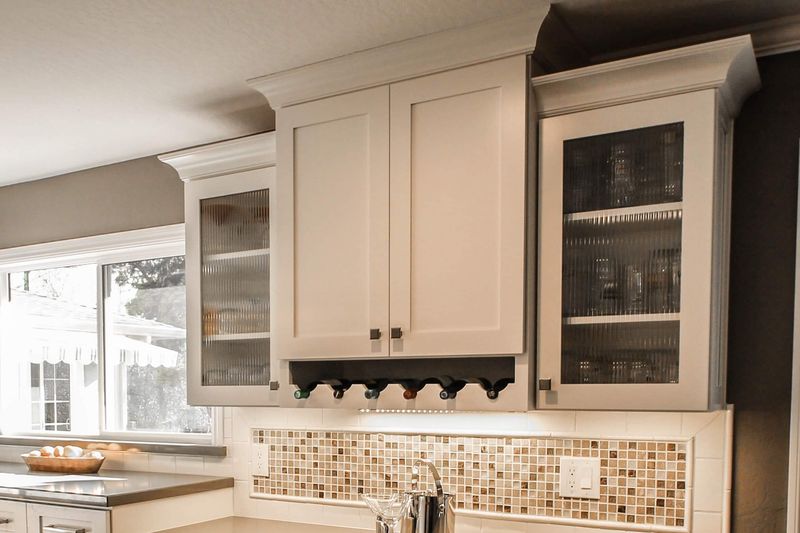
Those cloudy, textured glass cabinet doors that partially obscured the contents behind them are becoming increasingly rare in Illinois kitchens. Popular in the early 2000s, these frosted panels were meant to add visual interest while hiding mismatched dishware.
Unfortunately, they collected dust in the tiny crevices of their patterns and quickly looked grimy despite regular cleaning. The dated aesthetic often clashed with more contemporary design elements as homeowners updated other parts of their kitchens.
Many Illinois residents have replaced these high-maintenance doors with either solid panels or clear glass that showcases carefully arranged contents. The frosted look now feels like a relic of a bygone design era that most homeowners are happy to leave behind.
5. Formica countertops
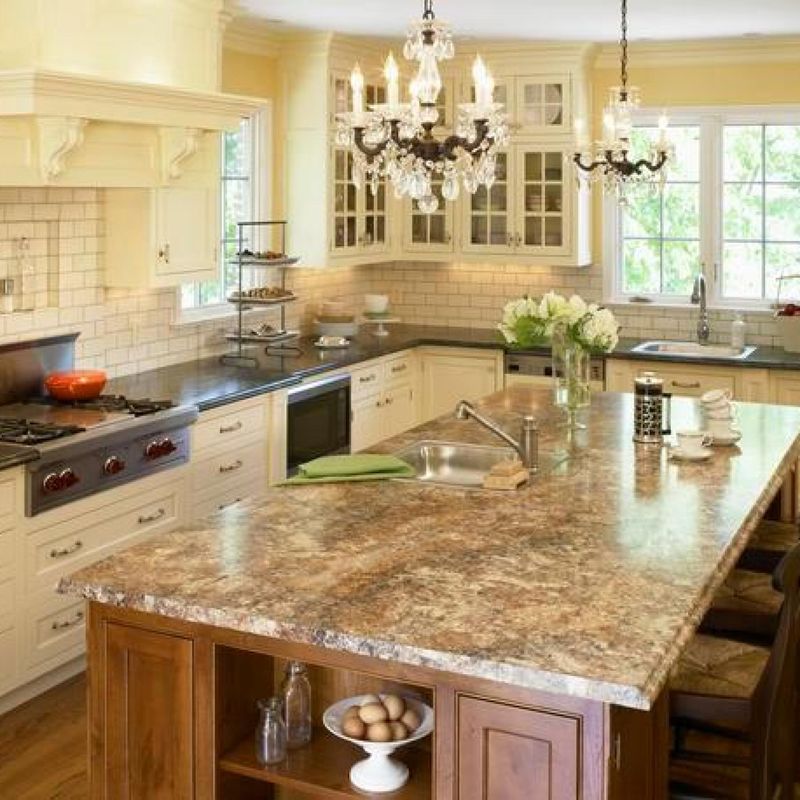
Once the workhorse of Illinois kitchens, those laminate Formica countertops with visible seams and dated patterns are disappearing rapidly. Their affordability made them extremely popular through the 1970s and 80s, especially in those charming Chicago bungalows and Springfield ranches.
While budget-friendly, these surfaces couldn’t withstand hot pans, showed knife marks easily, and developed unsightly wear patterns around sinks. The telltale black line along the edges where the laminate met the backsplash became an instant sign of an aging kitchen.
Modern Illinois homeowners now gravitate toward more durable materials that can handle the demands of busy family cooking. The faux-granite patterns that once seemed revolutionary now look unmistakably artificial compared to today’s alternatives.
6. Wall-to-wall carpet in kitchen
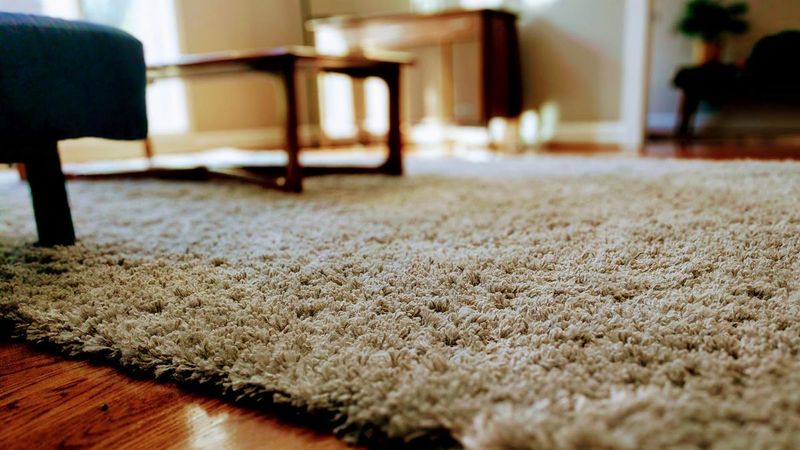
Believe it or not, wall-to-wall carpeting in kitchens was once considered desirable in many Illinois homes! This puzzling trend from the 1970s prioritized comfort underfoot over practicality in a room where spills are inevitable.
Illinois winters might be brutal, but homeowners quickly discovered that carpet absorbed cooking odors, trapped food particles, and became permanently stained from dropped spaghetti sauce. Even regular cleaning couldn’t prevent the gradual deterioration and potential mold growth underneath.
Today, you’d be hard-pressed to find carpeted kitchens anywhere in the state. Most Illinois homes have transitioned to hardwood, luxury vinyl plank, or tile flooring that can handle the rigors of kitchen life while still offering comfort through strategically placed washable rugs.
7. Tiled countertops with grout
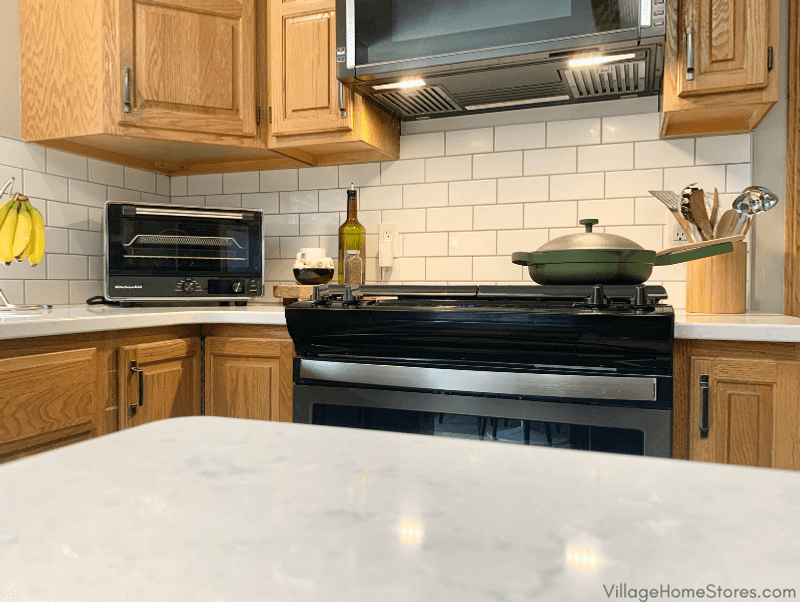
Those ceramic tiled countertops with endless grout lines are rapidly vanishing from Illinois kitchens. Once considered a DIY-friendly and affordable option, these surfaces created more problems than they solved for busy households.
The uneven surface made rolling out pie dough nearly impossible, while the grout lines became permanent traps for food particles and harbored bacteria despite rigorous cleaning. Coffee, tomato sauce, and red wine left stubborn stains that no amount of scrubbing could remove from the porous grout.
Homeowners across Chicago’s suburbs and downstate communities have been eagerly replacing these high-maintenance surfaces. The constant need for resealing and the inevitable cracked or chipped tiles made these countertops more trouble than they were worth for practical Illinois cooks.
8. Heavy valance curtains
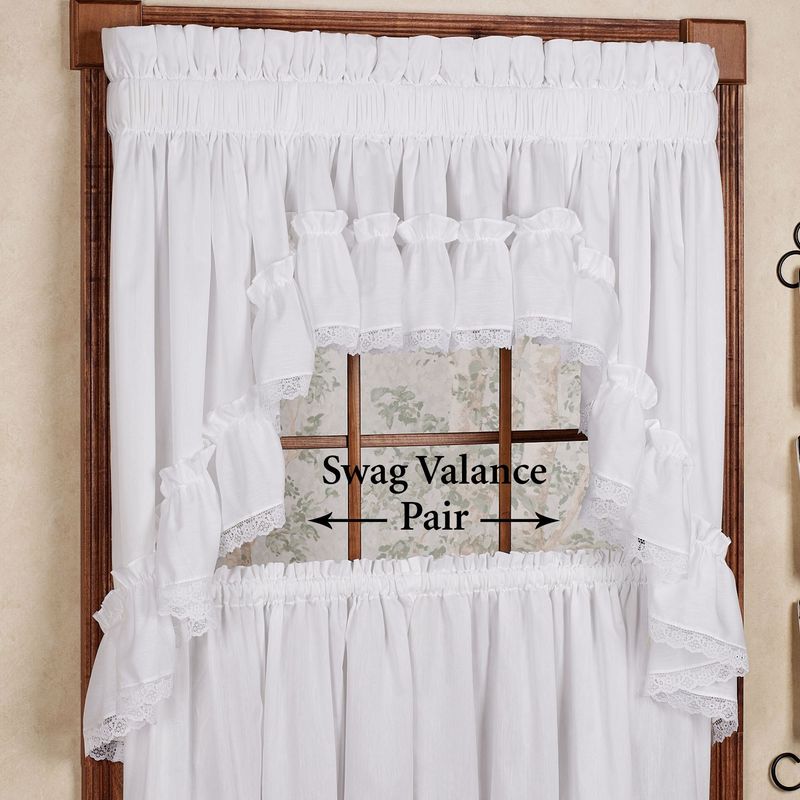
Those elaborate fabric valances with swags, jabots, and heavy tassels that once crowned Illinois kitchen windows are disappearing faster than corn in August. These dust-collecting window treatments were status symbols in the 1980s and 90s, often coordinating with wallpaper borders in country-themed kitchens.
The fussy, formal look these valances created feels dramatically out of step with today’s more streamlined aesthetics. They blocked natural light, collected cooking grease, and required professional cleaning to maintain – a trifecta of impracticality.
Modern Illinois homeowners prefer simpler window treatments that maximize sunshine while providing privacy when needed. The removal of these dated fabric features instantly modernizes a kitchen and makes the space feel larger, brighter, and more welcoming – a win-win for Prairie State homes.
9. Bulky kitchen islands
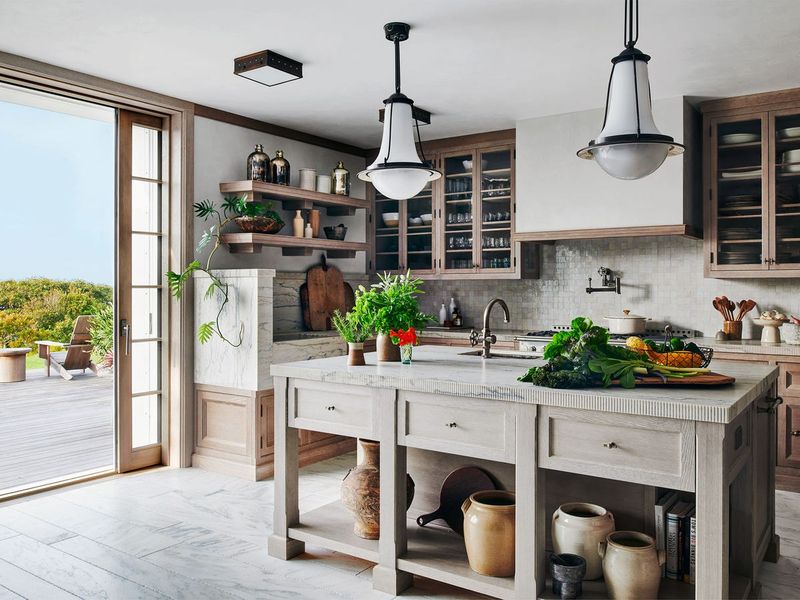
Those massive, immovable kitchen islands that dominated floor space are gradually disappearing from Illinois homes. These behemoths often featured dated details like decorative corbels, fake distressing, and ornate moldings that collected dust and grease.
While Illinois families still love kitchen islands, the oversized versions that made navigation difficult have fallen out of favor. Many were poorly proportioned for the actual kitchen size, creating awkward traffic patterns and making the room feel cramped rather than spacious.
Today’s homeowners prefer more appropriately scaled islands with cleaner lines and better functionality. The trend toward flexible living means many Chicago-area families now choose islands with wheels or multi-level surfaces that adapt to different needs rather than permanent monuments that dictate how the kitchen must be used.
10. Matching appliance packages
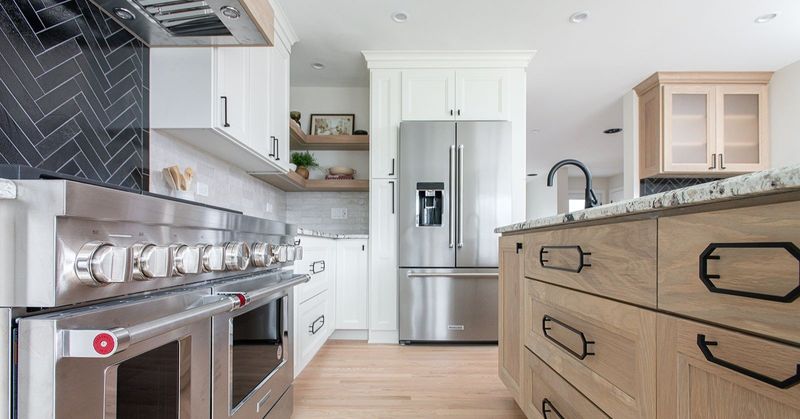
The days when every Illinois kitchen needed perfectly matched appliances from the same brand and finish are fading fast. That matchy-matchy approach often meant compromising on performance just to maintain a unified look.
Smart homeowners now prioritize function over rigid aesthetic rules. A chef-quality range might pair with a budget-friendly refrigerator chosen for its organizational features rather than its brand name. This mix-and-match approach allows families to invest in what matters most to their cooking style.
Across the Prairie State, from Lake Michigan shores to Mississippi River towns, kitchens now showcase intentional appliance diversity. The freedom to combine stainless, panel-ready, and even colorful appliances has created more personalized cooking spaces that reflect how real Illinois families actually use their kitchens.
11. Oversized pantry doors
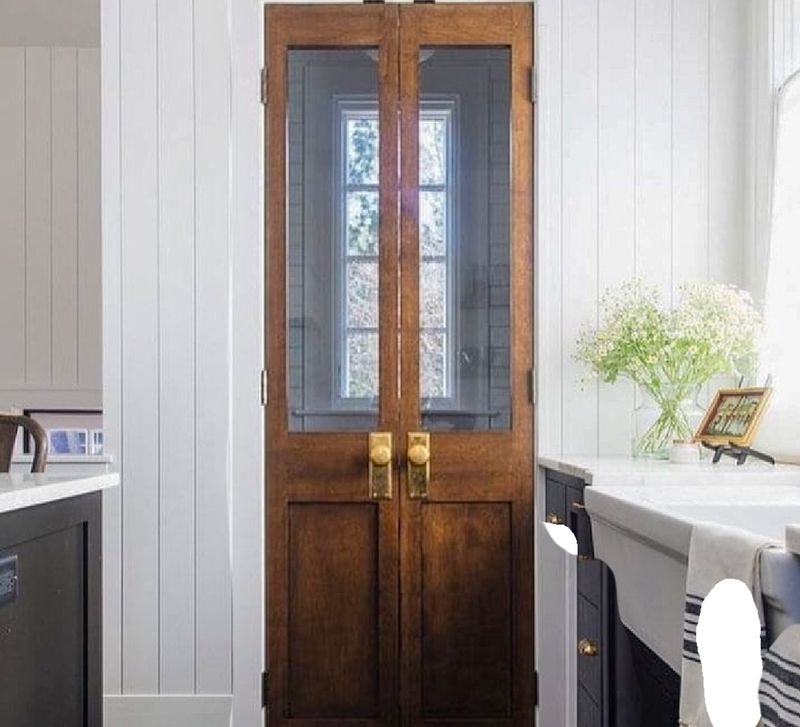
Those enormous, ornate pantry doors that announced “THIS IS THE PANTRY!” are vanishing from Illinois homes. Often featuring decorative glass, elaborate carvings, or country-style text labels, these statement doors drew attention to food storage in an unnecessarily dramatic way.
The cumbersome doors frequently caused traffic jams in busy kitchens when left open during meal preparation. Many Illinois homeowners have replaced these showpieces with more subtle pocket doors, sleek sliding systems, or have removed doors entirely for open pantry concepts.
Modern Prairie State kitchens favor accessibility over announcement. The trend toward streamlined design means storage solutions that blend seamlessly rather than calling attention to themselves. This shift reflects a more practical approach to kitchen organization that prioritizes function while maintaining clean visual lines.
12. Flat beige walls
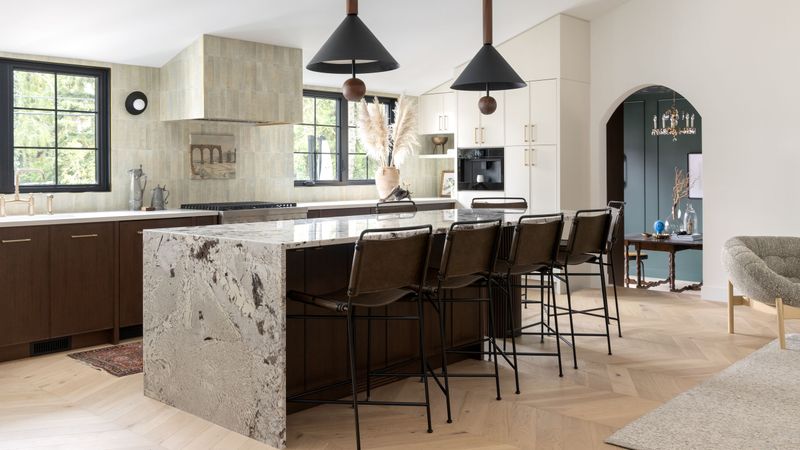
The era of playing it safe with flat beige paint on every kitchen wall is ending across Illinois. Those characterless, builder-grade walls that showed every fingerprint and food splatter are being replaced with more practical and personality-filled alternatives.
Modern homeowners recognize that kitchens need durable, washable finishes that can handle the demands of cooking. Satin and semi-gloss paints in actual colors from soft blues in Chicago condos to warm terra cottas in Springfield homes have replaced the bland beige backdrop.
Even white walls (when chosen) now have intentional undertones and quality finishes rather than the flat, cheap look of decades past. This shift acknowledges that kitchen walls should be both beautiful and functional, standing up to the steam, grease, and occasional spaghetti sauce splatter that real Illinois cooking inevitably produces.
13. Full backsplash to ceiling
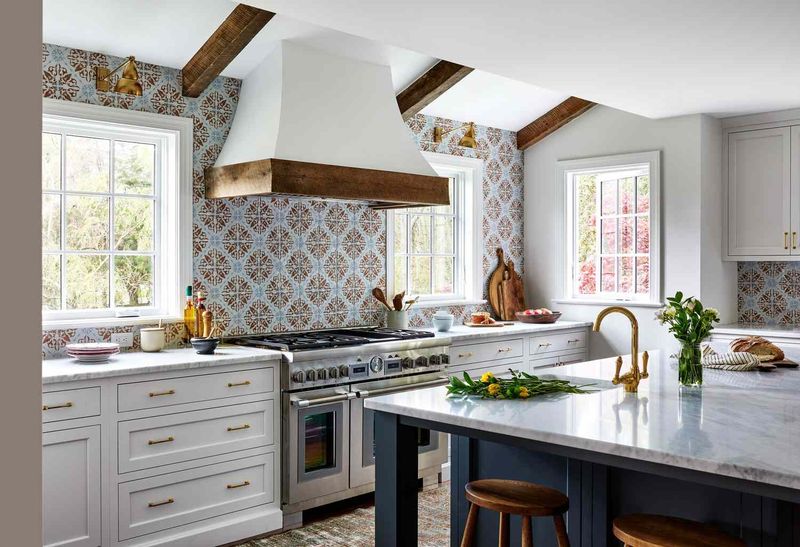
Those overwhelming backsplashes that stretched from countertop all the way to ceiling are retreating from Illinois kitchens. This maximalist trend often featured busy patterns or high-contrast tiles that dominated visual space and made kitchens feel chaotic rather than calming.
Homeowners discovered these floor-to-ceiling tile installations were not only expensive but dated quickly as trends evolved. The excessive grout lines created maintenance nightmares, especially behind ranges where cooking splatter made regular cleaning essential but difficult.
Many Prairie State renovations now feature more restrained backsplashes that stop at a logical height. This balanced approach provides necessary protection for walls while allowing other kitchen elements to shine. The shift reflects a more sustainable design philosophy that avoids trendy excesses in favor of thoughtful, long-lasting choices.
14. Corner lazy Susans
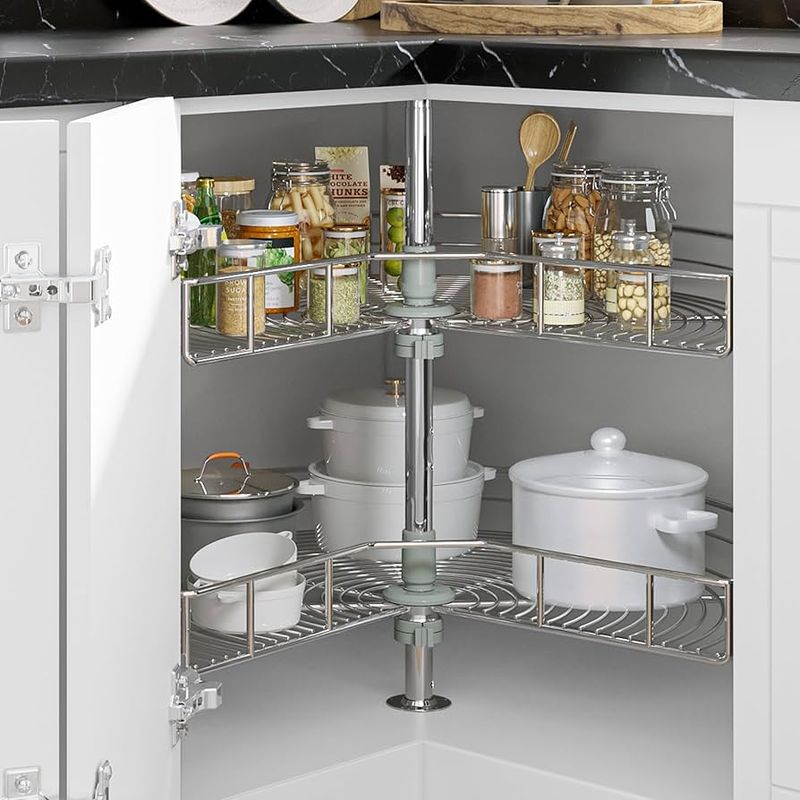
Those spinning corner cabinet solutions known as lazy Susans are gradually disappearing from Illinois kitchens. Once considered ingenious space-savers, these rotating shelves proved problematic in daily use, with items frequently falling off the back or getting stuck between the mechanism and cabinet walls.
The awkward shape meant standard containers never quite fit properly, creating wasted space despite their space-saving promise. Many homeowners found themselves needing to empty the entire contraption just to reach one item tucked in the back.
Modern Illinois kitchen renovations now favor drawer systems, pull-out shelving, or specially designed corner solutions that provide easier access. The shift acknowledges that while corner cabinets present design challenges, the traditional lazy Susan created as many problems as it solved for busy families trying to efficiently organize their cooking spaces.
15. Marble countertops
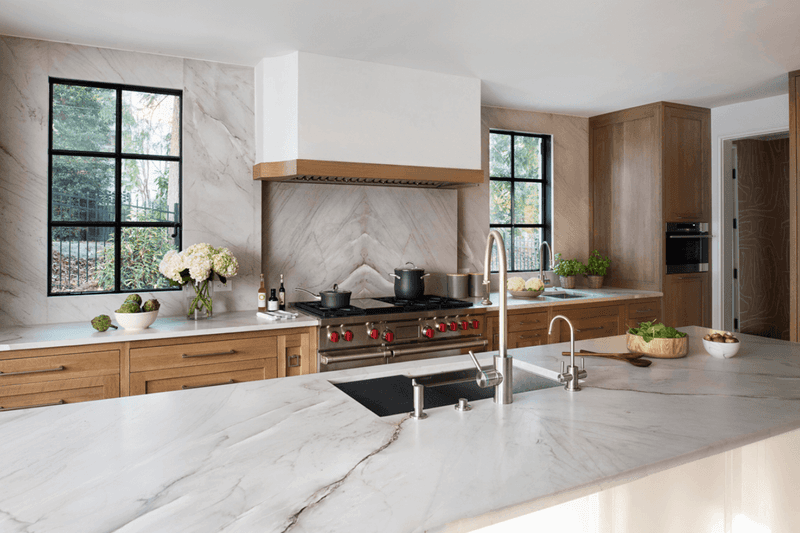
Marble countertops continue to grace Illinois kitchens with timeless elegance that transcends passing trends. The natural stone’s subtle veining creates one-of-a-kind surfaces that develop character as they age, telling the story of family gatherings and holiday baking marathons.
While requiring more maintenance than engineered options, marble’s natural cooling properties make it ideal for pastry preparation – a significant advantage during humid Illinois summers. The material’s ability to patina gracefully means small etches and marks add to its lived-in beauty rather than detracting from it.
From historic Oak Park bungalows to contemporary Lake Shore Drive condos, marble countertops bring a touch of luxury that elevates everyday cooking. Their ability to complement virtually any cabinet style ensures they’ll remain desirable in Prairie State homes for generations to come.
16. White shaker cabinets
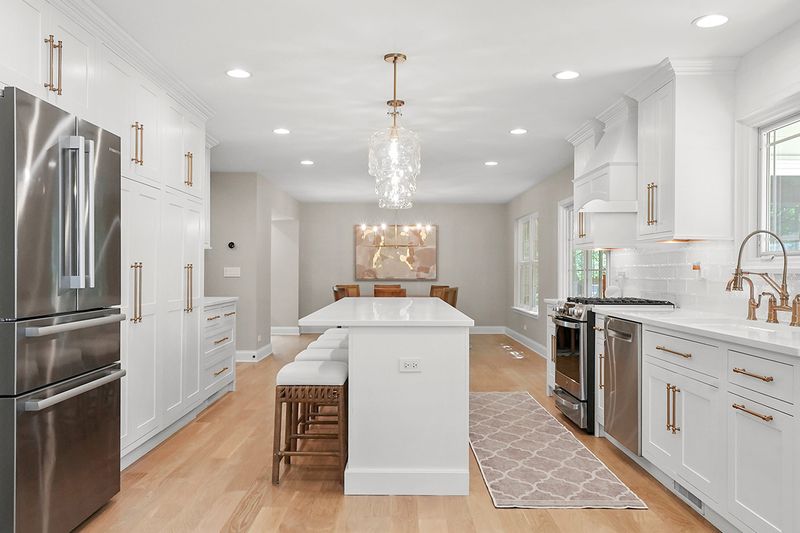
White shaker cabinets continue their reign as kitchen royalty throughout Illinois homes. Their clean lines and versatile styling work equally well in Chicago’s vintage apartments and Springfield’s modern builds, providing a timeless foundation that adapts to changing tastes.
The simple frame-and-panel design offers visual interest without overwhelming the space. Their brightness helps combat those notoriously gray Illinois winter days, reflecting whatever natural light is available to create an inviting atmosphere year-round.
Many homeowners appreciate how these cabinets can easily transition between design styles with simple hardware swaps. Whether paired with farmhouse elements in rural communities or sleek contemporary features in urban settings, white shaker cabinets prove themselves to be the chameleons of kitchen design – a safe yet sophisticated choice that stands the test of time.
17. Open shelving with curated ceramics
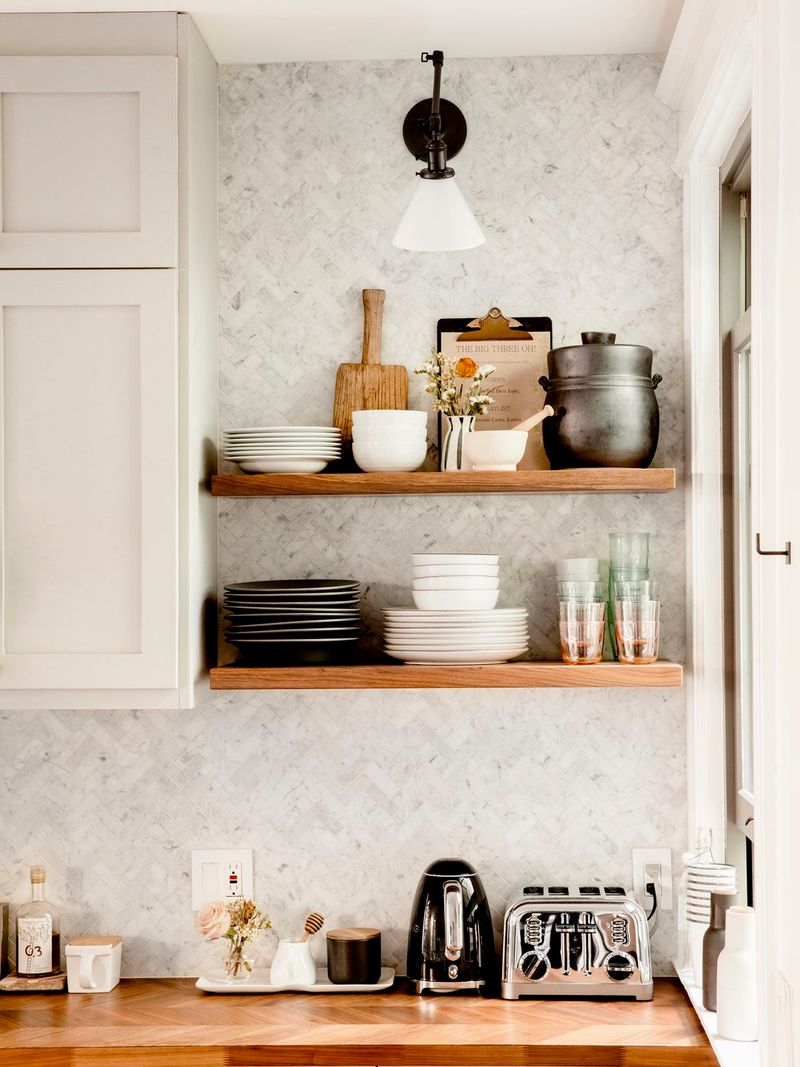
Strategic open shelving continues to shine in Illinois kitchens when thoughtfully executed. Unlike the impractical trend of removing all upper cabinets, today’s approach features carefully placed open sections that showcase beautiful everyday items while maintaining sufficient closed storage elsewhere.
Local pottery from Illinois artisans, vintage Fiestaware collected from Chicagoland flea markets, or treasured family pieces become functional art displays. The key to success lies in curation – displaying only what’s both beautiful and regularly used prevents the dusty, cluttered look that doomed earlier open shelving attempts.
This partial approach acknowledges the reality of Midwestern living, where seasonal cooking equipment and holiday serving pieces still need proper storage. When balanced with practical considerations, these open moments create personality and warmth that purely functional kitchens often lack.
18. Brass or matte black hardware
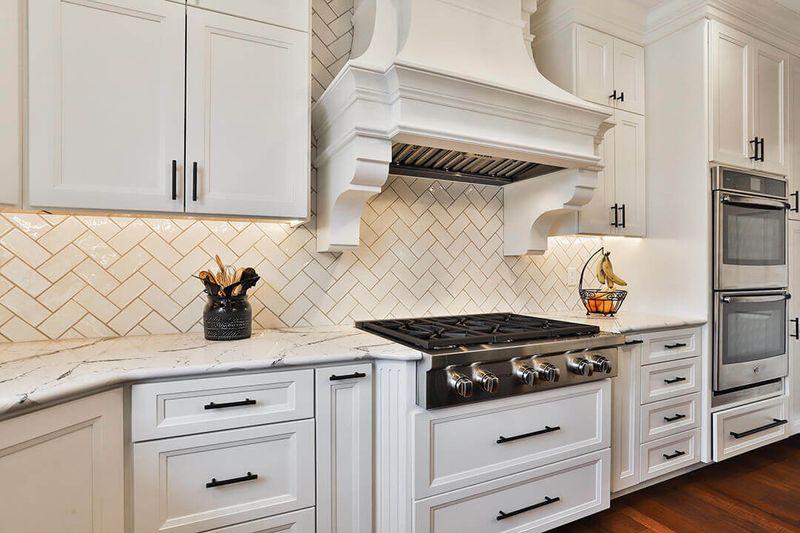
Hardware in warm brass tones or sophisticated matte black continues to elevate Illinois kitchens with minimal investment. These finishes add character to even the most basic cabinetry, functioning as jewelry that completes the room’s overall look.
Unlacquered brass handles develop a living patina that tells the story of your family’s hands preparing countless meals. Meanwhile, matte black options provide dramatic contrast against light cabinets while hiding fingerprints – a practical consideration for busy households.
Illinois homeowners appreciate how easily these hardware choices can be updated when desired. The relatively low cost of replacement compared to major renovations makes hardware an accessible way to refresh a kitchen’s appearance without commitment to permanent changes. This balance of impact and flexibility ensures these finishes will remain Prairie State favorites for years to come.
19. Quartz countertops in neutral tones
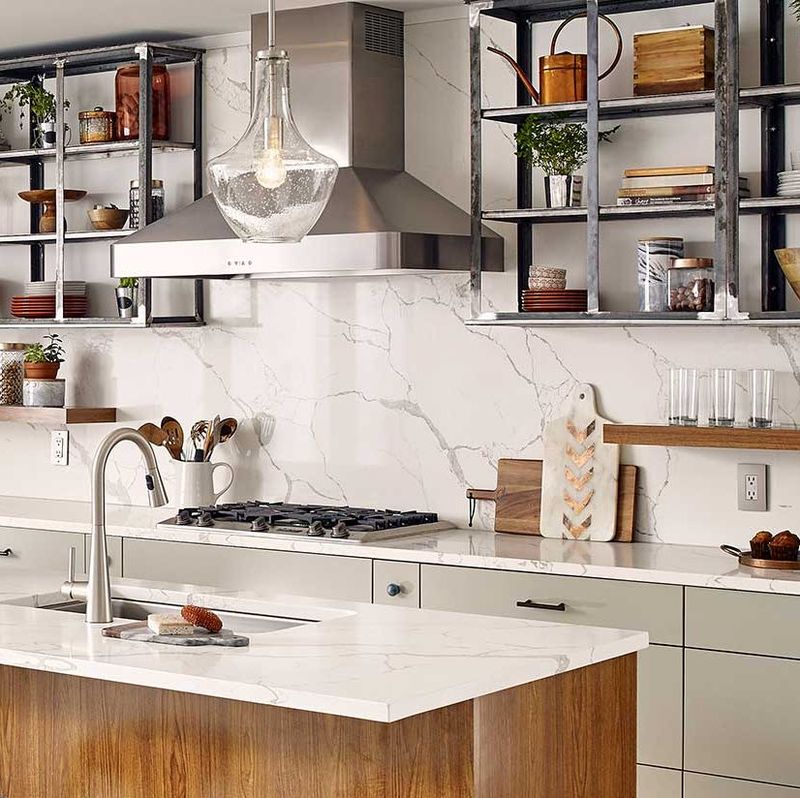
Engineered quartz countertops in subtle, natural colorways continue to dominate Illinois kitchen renovations for good reason. Their practically indestructible nature stands up beautifully to the demands of real family life – from science project mishaps to holiday cooking marathons.
Unlike natural stone, these surfaces resist staining from spilled coffee or red wine, a significant advantage during those Sunday Bears game gatherings. The consistent patterning provides a calmer visual backdrop than heavily veined options, creating a sense of order in busy households.
Across the Prairie State, from Lake County mansions to cozy Carbondale bungalows, quartz delivers worry-free performance year after year. The material’s ability to mimic natural stone while offering superior durability makes it a practical luxury that Illinois homeowners consistently report as a worthwhile investment.
20. Statement pendant lighting

Eye-catching pendant lights continue to transform Illinois kitchens from merely functional to truly special. These architectural jewelry pieces create focal points that draw the eye upward, making ceilings appear higher – a welcome effect in older Chicago two-flats and Springfield bungalows.
The right pendants can telegraph a home’s personality instantly, whether through industrial fixtures that honor Illinois’ manufacturing heritage or handblown glass that adds artisanal warmth. When properly scaled and positioned, these lights provide crucial task illumination while simultaneously creating ambiance.
Many Prairie State homeowners use distinctive lighting to bridge different design elements, helping traditional cabinets harmonize with contemporary countertops or vice versa. This chameleon-like ability to unify disparate styles ensures statement lighting will remain relevant even as other trends come and go.
21. Built-in kitchen banquette
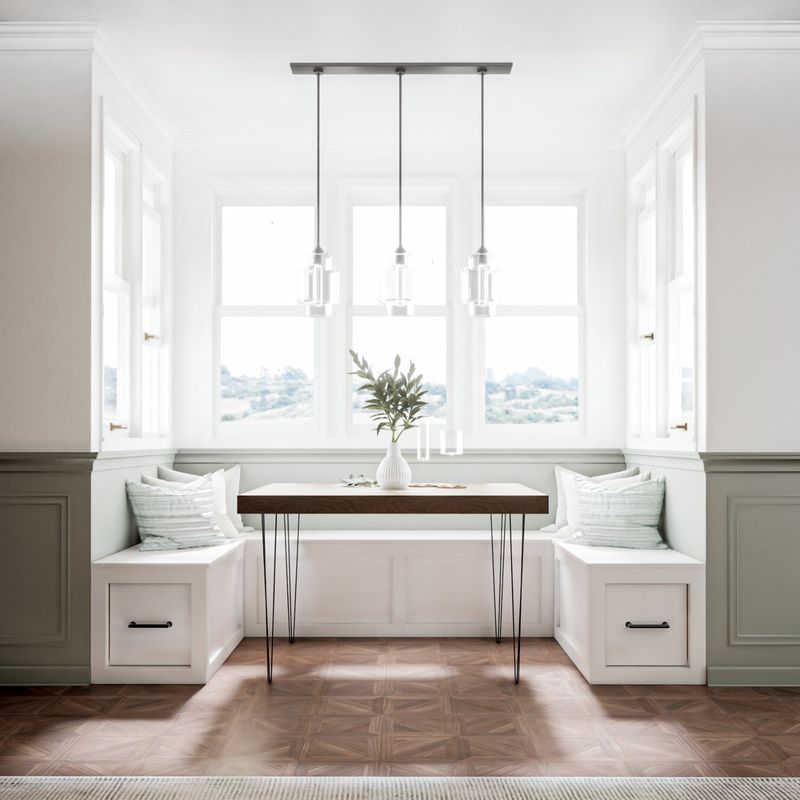
Built-in banquettes continue earning their keep in Illinois kitchens by maximizing seating while minimizing spatial footprint. These clever arrangements transform awkward corners into inviting gathering spots where families connect over morning coffee or homework sessions.
The hidden storage beneath bench seating provides perfect homes for seldom-used appliances or seasonal items. During those famous Illinois winter storms, these cozy nooks create warm spots to linger with a book while soup simmers nearby.
From Chicago’s historic greystones to Springfield’s charming craftsmans, built-in dining areas honor the architectural integrity of older homes while meeting modern family needs. Their ability to accommodate more people than freestanding furniture in the same square footage makes banquettes particularly valuable in urban settings where space comes at a premium.
22. Subway tile backsplashes
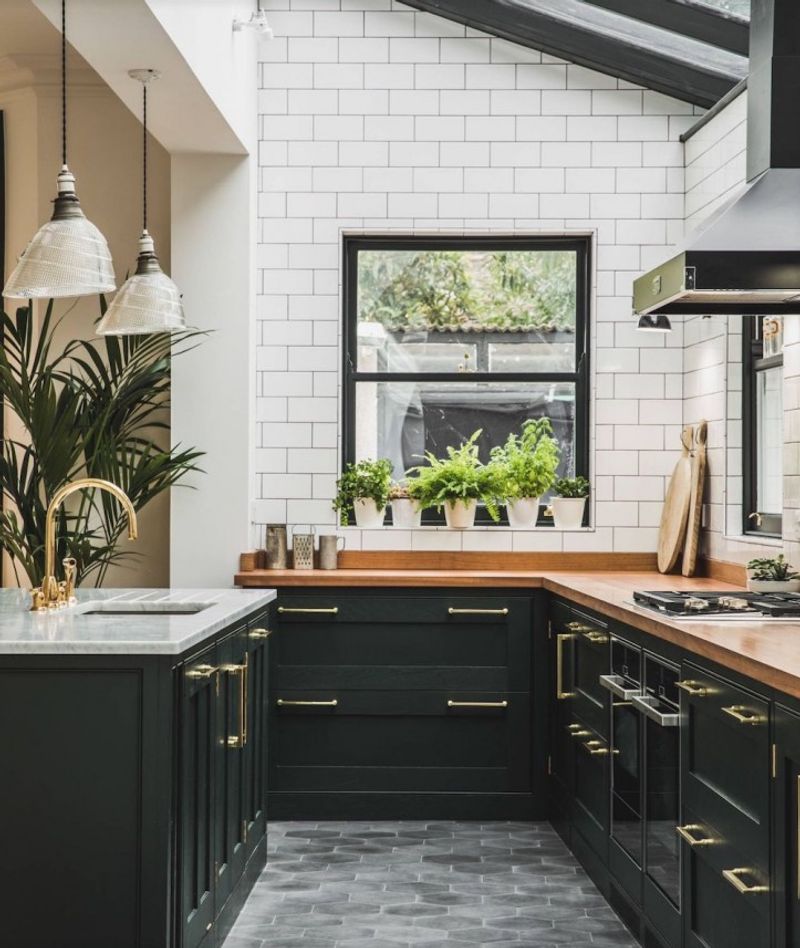
Classic subway tile continues its century-long reign in Illinois kitchens, proving that true classics never really go out of style. The simple rectangular tiles offer a clean backdrop that complements rather than competes with other design elements.
While basic white remains popular, Illinois homeowners increasingly explore subtle variations – handmade tiles with slight irregularities, softer cream tones that warm up north-facing kitchens, or gentle celadon greens that reference vintage Chicago architecture. The affordable price point makes subway tile accessible for nearly any budget, delivering high-end looks without breaking the bank.
The practical benefits remain as relevant today as when these tiles first appeared in early 20th century homes. Their non-porous, easy-to-clean surface handles splattered tomato sauce from grandma’s famous recipes with simple wipe-down maintenance.
23. Under-cabinet LED lighting
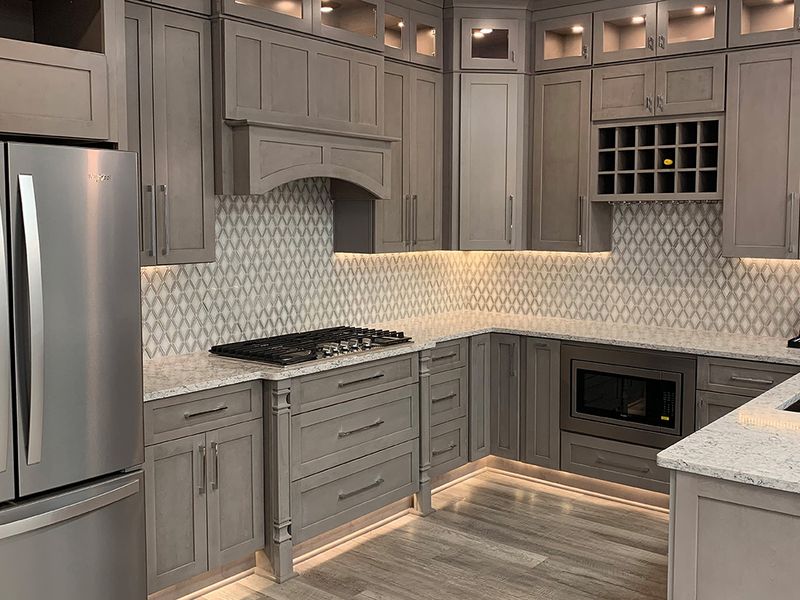
Under-cabinet LED lighting continues to brilliantly solve the age-old kitchen problem of working in your own shadow. These slim, energy-efficient fixtures illuminate countertops precisely where task lighting matters most, making food prep safer and more enjoyable for Illinois home cooks.
The dramatic reduction in energy use compared to older lighting solutions appeals to environmentally-conscious Prairie State homeowners. Many systems now offer color temperature adjustments, creating energizing bright light for morning coffee preparation and warmer, more relaxing ambiance for evening wine and cheese boards.
The nearly invisible installation preserves clean sightlines while transforming the kitchen’s functionality. This perfect combination of practicality and atmosphere enhancement ensures under-cabinet lighting will remain a must-have feature in Illinois kitchens from Chicago high-rises to Galena farmhouses for years to come.
24. Natural wood accent walls
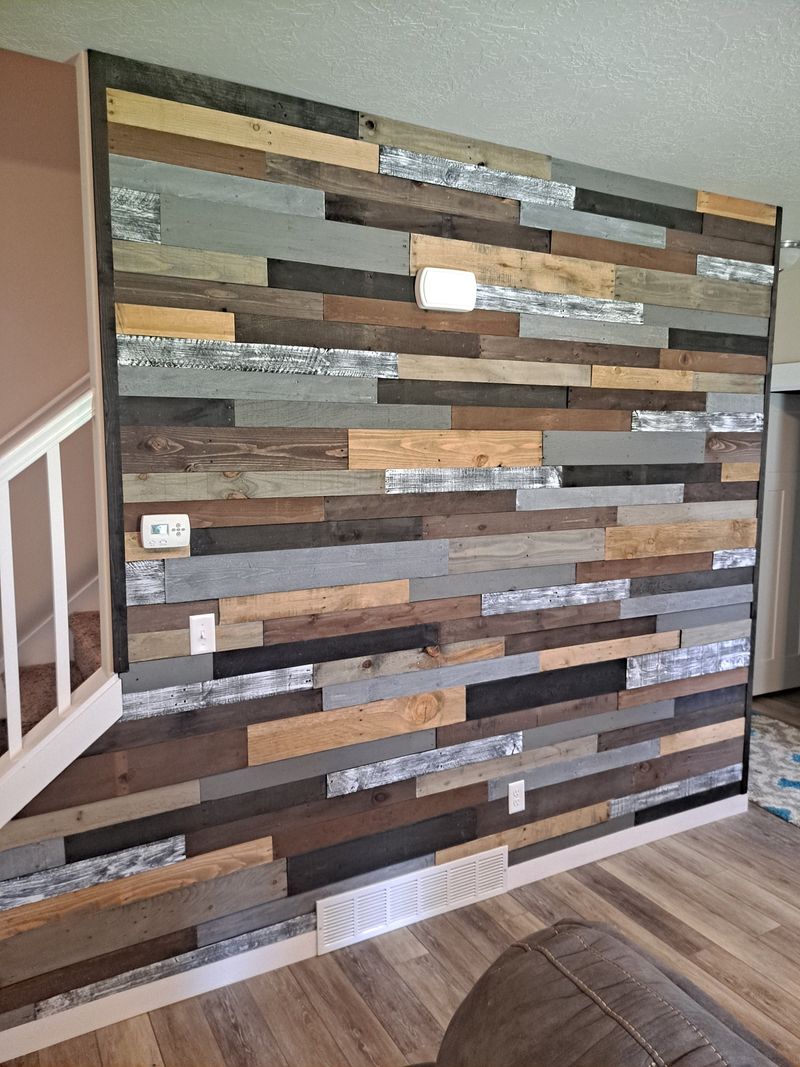
Warm wood accent walls continue bringing natural texture and visual interest to Illinois kitchens. Unlike the dated wood paneling of decades past, today’s applications feature authentic materials thoughtfully applied to create focal points rather than overwhelming entire rooms.
The natural variations in each board celebrate imperfection in our increasingly digital world. Many Illinois homeowners source reclaimed barn wood from downstate farms or salvaged timber from Chicago warehouse renovations, adding local history and sustainability to their kitchens’ stories.
These wooden moments create instant coziness during brutal Illinois winters while maintaining their appeal through humid summers. The material’s timeless quality bridges different design styles effortlessly – complementing both farmhouse elements in rural homes and industrial touches in urban lofts. This versatility ensures wood accents will remain relevant regardless of other trend fluctuations.

